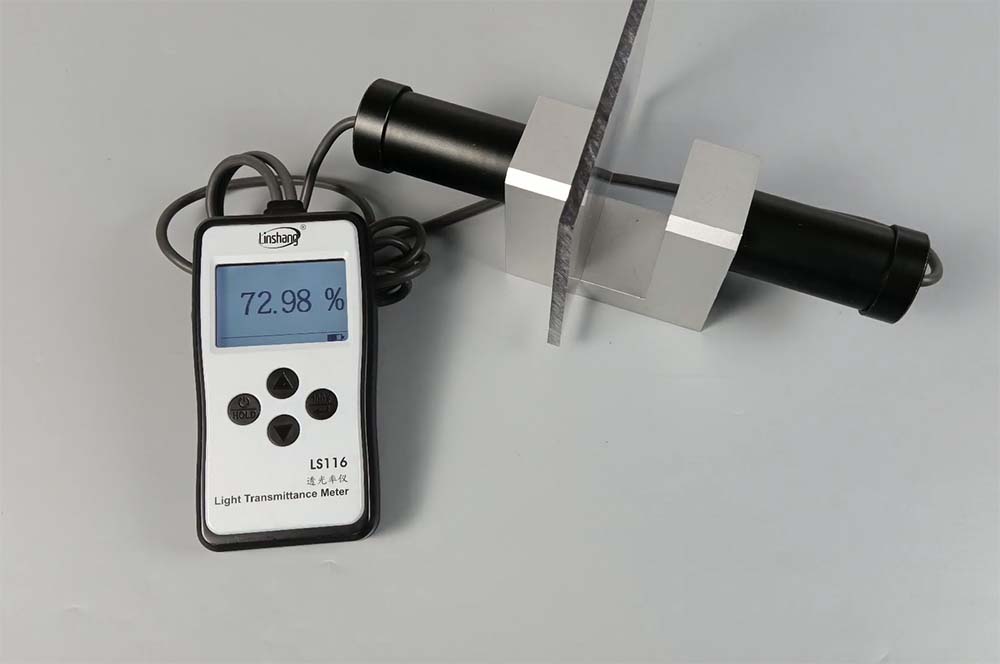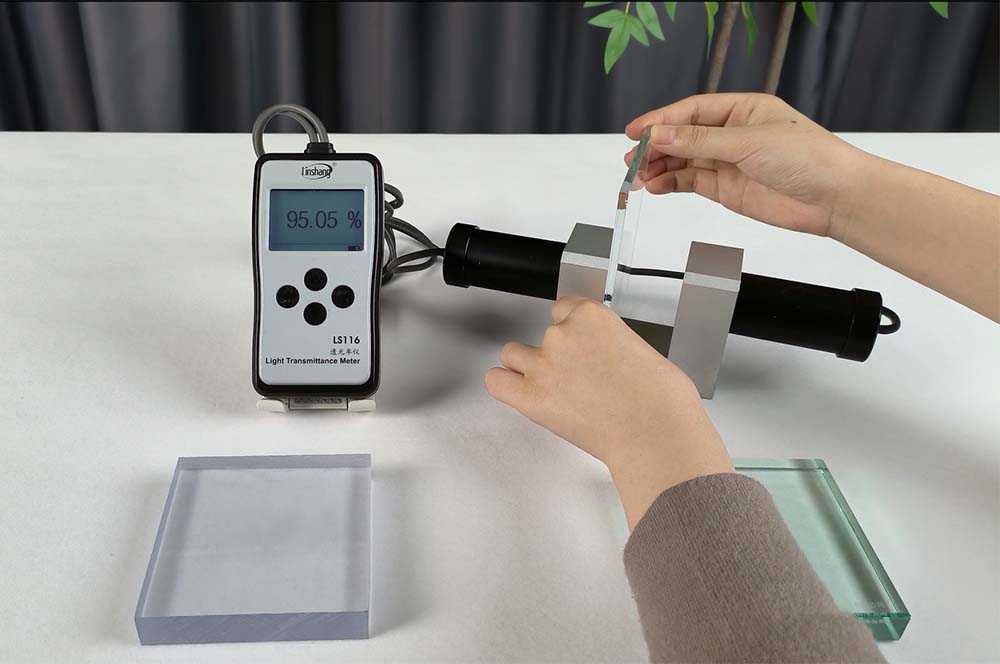How to use acrylic light transmittance tester?
Acrylic is also called special treatment of organic glass, its transparency and translucency can be comparable to glass, is a thermoplastic material. 6mm of pure acrylic transparent sheet light transmission rate can reach more than 90%, ordinary 6mm glass light transmission rate is generally about 80%, 6mm of ultra-white glass light transmission rate can reach more than 90%. Therefore, the light transmission rate is one of the important parameters for testing acrylic panels, acrylic panels of many kinds, for different kinds of acrylic materials, testing the light transmission rate of different instruments. Transparent acrylic panels generally use acrylic transmittance tester for testing, translucent acrylic panels generally use optical density meter for testing. Then this article introduces how to use acrylic light transmission tester to detect transparent acrylic materials.

The measurement principle of acrylic transmittance tester
The instrument has a built-in light source and receiver, the receiver can receive the incident light intensity of the light source and the light intensity through the measured material, the detector receives the light intensity signal converted to a voltage signal, and then an analog-to-digital converter (ADC), the voltage signal is converted to a digital signal. The transmittance is the ratio of the transmitted light intensity to the incident light intensity, and the screen of the instrument displays the transmittance value.
The use of acrylic transmittance tester
The next Linshang LS116 light transmittance meter as an example, to introduce the use of methods
-
Setting
Press and hold the power button in the off state to enter the setting interface, only need to choose whether to automatically shut down, up and down flip key for selection, the right button for confirmation.
-
Power on
After setting, the instrument will enter the power-on state, the instrument will be self-calibrated, the instrument interface will prompt "warm up", the whole process is about 30 seconds, after calibration, the instrument interface will show "100%" for successful calibration.
-
Measurement
Place the acrylic plate between the two sleeves to start measuring, the instrument interface will display real-time data.
-
Data view
You can short press the left button (power button/HOLD button) to lock the measurement data and be recorded in the instrument, the instrument can record a total of 9 sets of data, you can view the historical data by short press the up and down flip key. Measurement of the same acrylic plate can be selected multiple times to measure the light transmission of different parts of the acrylic plate to see whether the light transmission is uniform. Long press the right button to delete all historical data.

Measurement method of acrylic transmittance tester
Fixed bracket test. Two sleeves can be fixed in the bracket, the acrylic plate into the test slot, but the thickness of the measurement method of the acrylic plate can not exceed 40mm.
Handheld method of testing. If the acrylic plate has been installed, first let the instrument power on through self-calibration, the two sleeves removed and placed on both sides of the acrylic plate, the sleeves aligned. If the thickness of the acrylic plate is very thin, you can rely on the probe comes with a magnetic clamping acrylic material for measurement.
This is all about how to use acrylic light transmission tester to detect transparent acrylic materials.
- Paper gloss meter application in printing industry and how to measure?
- UV Dosimeter Used to Measure UVGI Light Intensity and UV Dose
- PC and ABS Material Gloss Control and Detection
- Gloss Tester | Why is the Metal Surface Gloss Very High?
- Glass Thickness Tester | Is the Windshield Laminated Glass?
- Principle of Specular Gloss Measurement